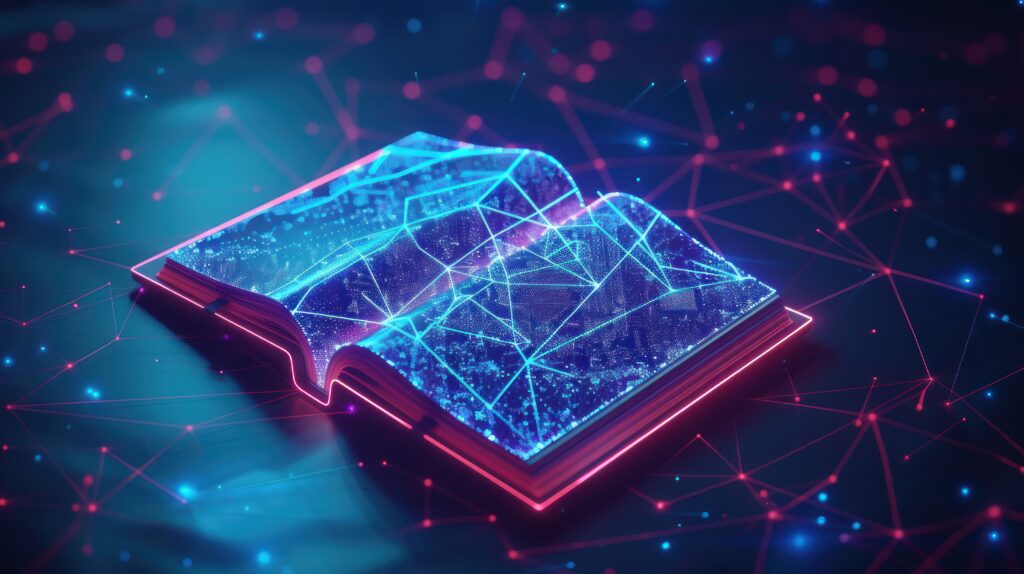Blockchain and crypto usually go together, right? But here’s the thing—universities are now using this tech for something way more practical. They’re storing diplomas on it. Transcripts too. Why? Because the old system is broken.
Ever tried getting your college to send transcripts somewhere? It takes forever. And fake degrees are everywhere online. You can buy a Harvard diploma for like $200. Blockchain stops that cold. Once your degree goes on there, it stays. Can’t be changed. Can’t be faked.
MIT started doing this back in 2017. Students get digital diplomas they actually own. No middleman. Employers verify them instantly instead of waiting weeks. Other schools saw this and thought, “Yeah, we should probably do that too.” Is it perfect? No. But it beats faxing transcripts around like it’s 1995.
Why Does the Education Sector Need Blockchain?
Schools have dealt with the same headaches for decades. You can buy a fake diploma from any major university for a couple hundred bucks online. HR departments waste entire afternoons calling schools to verify degrees. Student records vanish during server migrations or when buildings flood. Transfer between two colleges and half your credits mysteriously disappear.
Blockchain fixes these specific issues. Someone checks your degree and sees it immediately. Your 2015 diploma still works in 2035 even if your university shuts down. Moving schools gets easier because your academic history lives in one spot already. Hiring managers verify credentials themselves instead of playing phone tag with registrars.
Most schools still use paper transcripts, scattered email chains, and databases that never communicate. Blockchain puts verified information where everyone can see it. Lost transcript requests end. Those shady websites hawking Stanford degrees for three hundred dollars become useless because employers can spot fakes instantly.

Role of Blockchain in Education
Education runs on trust. Students trust schools to keep their records safe. Employers trust that diplomas mean something. Schools trust that applicants actually attended the places they claim. This whole system has problems though. Records can disappear. Administrative costs are rising. Blockchain fixes some of this mess.
Student Records
Schools store student data everywhere. Grades live in one system, attendance in another, disciplinary stuff somewhere else entirely. Try to get your complete academic history when you graduate and watch administrators scramble through five different databases. Blockchain puts everything in one spot that actually stays there.
E-Transcripts
Order a transcript from most universities and you’re waiting five business days minimum. Pay extra for rush processing. Cross your fingers the registrar’s office doesn’t lose your request. Then wait for a sealed envelope to show up in the mail.
Blockchain transcripts skip all that. Students create a secure link or QR code. Employers or other schools check it immediately. They see verified grades, completion dates, and degree status right then. The University of Nicosia in Cyprus does this. Students say job applications move way faster when companies verify credentials the same day instead of weeks later.
Publishing and Copyright Protection
Academic researchers publish papers and immediately worry about theft. Someone lifts their work, strips the attribution, republishes it elsewhere. Proving you wrote it first turns into a legal headache. Blockchain timestamps work the moment it goes live. Nobody can argue about who created what first.
Teachers deal with the same problem. Spend months building a curriculum and find it copied all over the internet with no credit. Blockchain lets educators register content with cryptographic proof they made it. Platforms like Orvium manage academic publishing this way so researchers keep control over their own work.
Automated Learning Platforms
Adaptive learning systems track how students do and adjust difficulty. These platforms collect tons of data about learning patterns, but that data usually gets trapped in proprietary systems. Blockchain lets students own their learning data and move it between platforms.
Take a math course on one site, science on another, and have both systems actually talk to each other about how you learn best. Sony Global Education built a blockchain platform that shares academic records across different services while students control who sees what.
Payment via Cryptocurrencies
International students get hammered with fees paying tuition from overseas. Wire transfers cost hundreds and take days. Currency conversion adds more fees on top. Cryptocurrency payments cut these costs dramatically and settle in hours.
King’s College in New York started taking Bitcoin for tuition back in 2014. Students from countries with crazy inflation or strict money controls found this incredibly useful. The University of Cumbria in the UK does it too. Crypto prices bounce around a lot, but stablecoins tied to regular currencies work better for this.
Smart Contracts for Courses and Assignments
Smart contracts execute automatically when conditions are met. In schools this means grades release when assignments come in, certificates issued when course requirements finish, refunds happen when courses get cancelled. All automatic.
You enroll in an online course and the smart contract holds payment. Finish all modules on time and the instructor gets paid while you get your certificate. Don’t finish and you get a partial refund based on how far you got. No administrators processing each transaction manually.
Woolf University, the first blockchain university, uses smart contracts between students and tutors. Payment only goes through after educational services actually happen. Protects everyone from getting ripped off.
Incentivization of Education
Getting students to actually do the work never gets easier. Blockchain enables reward systems where students earn cryptocurrency or tokens for finishing coursework, joining discussions, and helping classmates.
Redeem these tokens for course discounts, convert them to other crypto, and use them in educational ecosystems. BitDegree gives learners tokens for completing courses, and companies sponsor education by funding token rewards for skills they need. Some people hate this—saying it turns education into a game. Others point out completion rates go up.

Degrees, Report Cards, and Paperwork
Paper diplomas get ruined, lost, faked. Schools shut down and records disappear with them. Hurricanes destroy filing cabinets full of transcripts. Digital records on single servers die from hardware failures or hacks.
Blockchain stores things permanently across thousands of computers. Your degree exists everywhere at once. Even if your university closes or burns down, your credential still verifies. University of Melbourne gives blockchain certificates to all graduates now. Students feel better knowing their achievements can’t just vanish.
Universal Access and Lower Cost
Verifying credentials costs real money. Schools pay registrars to handle verification requests. Third-party services like National Student Clearinghouse charge fees for background checks. Students and employers pay these costs eventually.
Blockchain verification costs basically nothing. Anyone with the internet checks a credential instantly without paying middlemen. This helps students from developing countries especially, where verification services are expensive or don’t exist at all.
Student Records Management
Schools manage records for current students, alumni, people who attended fifty years ago. Storage costs pile up. Moving data during system upgrades risks losing stuff. Schools blow huge IT budgets keeping old systems alive just to preserve records.
Blockchain removes this burden. Putting a record on blockchain once and maintaining it costs nothing. Schools can shut down ancient database systems without losing historical data. Open University in the UK looked into this and found potential savings in the millions over ten years.
Digital Badging and Micro-Credentials
Regular degrees tell employers you finished a four-year program but reveal almost nothing about actual skills. Digital badges on blockchain prove specific abilities. Finish a Python module, get a verifiable badge. Master data visualization, get another one.
IBM and Mozilla started digital badge systems. Moving them to blockchain adds real verification and portability. A badge from one platform works everywhere. Employers looking for specific skills filter candidates by verified micro-credentials instead of just degree names.
Copyright Protection for Educational Content
Teachers make lesson plans, videos, worksheets, interactive stuff. Lots of this gets shared freely, but some educators want credit or payment. Blockchain creates a permanent record of who made what.
Platforms like LBRY use blockchain to distribute educational content while tracking usage and crediting creators. Teachers license materials with terms in smart contracts—free for non-profit education, paid for commercial use.
Student Identity Verification
Online education has identity fraud problems. Who actually took that exam? Is the person submitting work the enrolled student? Traditional solutions use creepy proctoring software watching webcams and tracking every keystroke.
Blockchain does cryptographic identity verification instead. Students prove identity once during enrollment, get a digital credential, and use it throughout their education. Each assignment links to that verified identity. More private than surveillance software but stronger authentication.
Credentialing for Lifelong Learning
People don’t just do school, college, career, retirement anymore. Education happens constantly throughout life. Traditional transcripts can’t handle this—they’re built for sequential degree programs, not decades of random learning.
Blockchain works for lifelong learning naturally. Your credential record starts in kindergarten and keeps going through professional courses you take at sixty. Everything shows up in one verifiable timeline. Learning Tree International uses blockchain to credential IT professionals as they complete courses throughout careers.

Decentralized Learning Management Systems
Traditional LMS platforms like Blackboard or Canvas control everything. The company owns your data, controls features, raises prices whenever. Decentralized blockchain LMS systems spread control among users instead.
Disciplina is building a blockchain LMS where students, teachers, and institutions all help govern it. No single company runs the show. Users vote on features. Data stays portable. If the platform sucks, migrate to alternatives without losing academic history.
Scholarship and Funding Distribution
Scholarship money involves paperwork, bank transfers, verifying students meet requirements. Smart contracts automate most of this. A scholarship contract releases funds each semester automatically once the student proves enrollment and maintains grades.
Cuts down on administrative work and gets money to students faster and more reliably. Blockchain transparency also lets donors see exactly where their money goes, which might increase charitable giving to education.
Decentralized MOOCs
Massive Open Online Courses opened up education access, but platforms like Coursera and edX centralized control and profits. Blockchain enables truly decentralized MOOCs where course creators deal directly with learners.
Instructors set prices or offer courses free. Students pay with crypto. Reviews and ratings live on blockchain so platforms can’t mess with them. BitDegree and ODEM are building decentralized course marketplaces using this approach.
Secure Data Storage for Research
Academic research creates sensitive data needing secure long-term storage. Clinical trials, survey results, experiments must stay unchanged to maintain scientific integrity. Blockchain provides tamper-proof storage with audit trails showing who accessed data when.
Research across institutions gets easier when everyone accesses verified data without trusting one institution’s centralized servers. Also helps with reproducibility—other researchers verify published results match original data.
Global Student Profiles
Students piece together education from multiple countries now. Semester abroad here, online course there, bootcamp somewhere else. Traditional systems can’t combine these experiences into one profile.
Blockchain creates portable global profiles. Coursework from a German university, coding bootcamp in Singapore, online course from an American platform—all in one verifiable record. Helps internationally mobile students and employers trying to understand global educational backgrounds.
Tokenized Incentives for Learning
Beyond basic completion rewards, blockchain enables complex incentive structures. Earn tokens mentoring other students. Stake tokens on finishing difficult courses and earn multiplied returns on success. Use tokens to vote on curriculum changes.
These economic models create self-sustaining educational ecosystems. EduCoin and Disciplina experiment with this, though questions remain whether financial incentives help or hurt intrinsic learning motivation.
Education Financing via Blockchain
Student loans involve borrowers, lenders, servicers, guarantors. Blockchain streamlines this through smart contracts that automatically handle payments, track balances, manage terms without extensive paperwork.
Some platforms explore income-share agreements in smart contracts where students pay a percentage of future earnings instead of fixed amounts. Blockchain automatically calculates and processes payments based on verified income data.

Cross-Border Collaboration in Education
International research collaborations and joint degree programs involve complicated agreements between institutions in different countries with different legal systems. Blockchain smart contracts encode these agreements with terms that execute automatically regardless of jurisdiction.
Payment splits for co-taught courses, credit transfers between partner universities, resource sharing—all simpler when managed through blockchain. European Commission funded research into blockchain for cross-border educational credentials through European Blockchain Services Infrastructure.
Reducing Fraud in International Admissions
Universities spend serious money verifying international applicants’ credentials. Fake transcripts from foreign institutions are common. Verification services exist but add cost and delay.
If more schools worldwide used blockchain credentials, international verification becomes instant and free. Admissions officers anywhere verify foreign credentials immediately. Helps students from countries where credential fraud is everywhere—blockchain certificates are way harder to forge than paper.
Immutable Attendance Records
Attendance tracking usually relies on teachers marking it or students swiping cards. Both get manipulated easily. Blockchain combined with biometric verification or mobile check-ins creates tamper-proof attendance records.
Matters for schools receiving per-student funding based on attendance or programs with strict attendance requirements for certification. Parents could access real-time verified attendance for their kids too.
Plagiarism Check
Current plagiarism detection compares student work against databases of published content. Blockchain expands this by creating a searchable database of all student submissions. Submit a paper and it gets hashed and recorded. Future submissions check against this growing database.
Catches plagiarism between students across different schools and time periods. Privacy concerns exist, but systems can use zero-knowledge proofs to detect matches without revealing actual content.
Decentralized Online Learning
Current online education concentrates power in platforms controlling content, setting prices, owning student data. Decentralized alternatives use blockchain to distribute these functions. Content creators publish directly without platforms taking huge cuts.
Students own learning data and choose what to share. Peer-to-peer learning happens without institutional gatekeepers.
Skill Badges
Skills matter more than ever but transcripts mainly show course titles. Blockchain skill badges provide granular verifiable proof of specific abilities. A software developer might have badges for React, Python, AWS, Agile—each verified by completing projects or assessments.
These badges stack to show expertise levels and learning paths. Unlike self-reported skills on resumes, blockchain badges include verification from issuers. Employers filter job applicants by required skills confident the badges are real.

Fraud Prevention
Credential fraud costs employers billions annually in bad hires. Fake degrees, inflated GPAs, fabricated experience all create risk. Blockchain makes credential fraud exponentially harder by creating verifiable unforgeable records.
Background check companies already see blockchain as a potential replacement for expensive manual verification. As adoption grows, we might reach a point where any credential not on the blockchain becomes automatically suspect.
Accreditation
Accreditation bodies certify schools meet quality standards. This involves mountains of documentation and periodic reviews. Blockchain could streamline accreditation by providing real-time access to verified institutional data.
Accreditors could continuously monitor key metrics instead of conducting reviews every few years. Schools demonstrate compliance automatically through blockchain records. Creates more dynamic responsive quality assurance for education.
Record Keeping
Beyond academic records, schools maintain facility records, employment records, financial records, compliance documentation. Lots of this involves redundant data entry across systems. Blockchain offers a single source of truth multiple systems can reference.
A student’s record updates once and that change reflects everywhere instantly. Reduces errors, eliminates duplicate entry, provides better audit trails. Less exciting than some blockchain applications but improved record keeping might deliver the most immediate practical benefits for schools.
Blockchain won’t fix everything in education. Implementation costs stay high and lots of people resist change. But the technology addresses real problems around verification, security, and administrative efficiency. Schools adopting blockchain early might gain advantages through reduced costs and improved services. As the technology matures, blockchain could become as fundamental to education infrastructure as the internet.
Benefits of Integrating Blockchain in Education Industry
Enhanced Security
Schools get hacked constantly. You hear about it on the news—student records stolen, financial info leaked, personal data sold on the dark web. Traditional databases store everything in one place, which makes them easy targets. One successful breach and boom, thousands of records are compromised. Blockchain fixes this problem in a pretty straightforward way. Instead of keeping information in one server, it spreads data across multiple computers. Each record connects to the previous one using cryptography, so if someone tries to change anything, they’d have to alter every single record that came after it on every computer in the network. That’s not realistically possible.
Virtual Exam
Online testing has a major problem—how do you know who’s actually taking the test? Most schools use proctoring software that watches you through your webcam and monitors every keystroke. It’s invasive and feels like having someone breathe down your neck the entire time. Blockchain handles this through cryptographic identity verification. You prove who you are once when you enroll. After that, you use that verified identity for everything. Each exam submission connects to your identity without needing constant surveillance. Plus, smart contracts can automate the whole testing process. Questions go live at the scheduled time, submissions lock when the deadline hits, scores get calculated without manual grading.
Efficient Collaboration
Try running a research project between three different universities and you’ll understand the headache. Who can access which datasets? Is this the latest version or did someone email an update yesterday? When it’s time to publish, how do you fairly split the credit? Blockchain solves these coordination problems by creating one shared record that everyone can see simultaneously. No more confusion about versions or who contributed what. Smart contracts handle the messy parts upfront. You agree on authorship percentages, data access rules, and publication rights before starting. Then everything executes automatically based on those terms.
Learning and Skill Development
Here’s the thing about traditional degrees—they’re vague. You tell an employer you have a four-year degree, but that doesn’t explain what you actually know how to do. Can you code in Python? Analyze data? Manage projects? The degree doesn’t say. Blockchain tracks skills at a much more detailed level using verified badges and micro-credentials. You complete a Python course and get a badge that proves it. Master data visualization and earn another one. Over time, these stack up to show your actual capabilities, not just that you sat in classrooms for four years.
Universal Access and Lower Cost
Right now, verifying someone’s credentials costs money and takes time. Schools employ registrars specifically to handle these requests. Background check companies charge fees. If the credentials come from another country, verification gets even more complicated and expensive. Blockchain makes verification instant and essentially free. Anyone can check a credential from anywhere without paying intermediaries or waiting days for a response. A student in rural India can prove their degree to a company in Germany immediately at no cost. Schools benefit too because they need fewer staff handling verification requests.

Challenges of Blockchain Technology
Scalability Concerns
Blockchain crawls when you need it to handle lots of activity at once. Bitcoin does about seven transactions per second. With a visa you can try thousands. But, put a big university with 50,000 students into the mix—everyone hitting the system during registration—and watch it fall apart.
Every transaction needs verification across a bunch of different computers which takes forever. Throw in more users and more records, and everything just gets slower. Some newer systems claim they fixed this, but dig a little and you’ll find they gave up something else to get the speed. Usually security or the whole point of decentralization. When graduation rolls around and thousands of students need transcripts sent out, the system has to actually work. Blockchain struggles with that kind of sudden rush.
Legacy Solutions
Schools run on dinosaur software. Stuff from the 90s, early 2000s at best. Old, clunky, annoying to use sometimes. But it works. More importantly, everything connects. The registration system talks to the grade system and talks to the financial aid system. Decades of integration make it all run together. Blockchain means starting over. Rip out everything and rebuild from scratch—costs a fortune. Or try connecting brand new blockchain to twenty-year-old mainframes—nightmare scenario. Either way, you’re looking at huge expenses and massive headaches.
Schools already spent millions on what they’ve got. An administrator looks at a blockchain proposal and thinks, why mess with something that works? Staff know the current systems backward and forward, problems and all. Training everyone on blockchain from IT to the registrar’s office to financial aid takes months. Things will break during the transition. Guaranteed. Probably right when students need everything to work perfectly.
Cost
Blockchain costs real money upfront. Need developers who know what they’re doing, and blockchain people are expensive because there aren’t many around. After that comes servers, security, backups, all the infrastructure. Doesn’t end there either. Someone has to watch these systems constantly and keep them updated. More staff or pricey contracts with outside firms. Public blockchains charge fees per transaction. Big school doing thousands daily? Those fees add up fast. Private blockchains skip transaction fees but you’re buying and maintaining all the hardware yourself. Still expensive. Community colleges barely scrape by on their budgets. Schools in poor countries have even less. Asking them to dump money into blockchain when their old systems still function doesn’t make sense.
Security Issues
Not really true. The blockchain part is secure, yeah. But people interact with it through regular logins and access points. Someone gets your password or private key and they’re in. All your stuff is exposed. Worse, you can’t undo things. Normal systems let admins fix mistakes, reverse bad transactions, reset passwords when things go wrong. Blockchain is permanent. Something bad happens and you’re stuck with it. Smart contracts are just code written by people. People make mistakes. One bug in a contract handling student records or tuition could wreck everything. Big blockchain hacks already happened where someone found flaws in smart contracts and stole millions. Schools can’t risk that with student data on the line. Lose your blockchain access somehow—credentials get misplaced, staff member leaves without documenting things—and recovering data becomes a massive problem. Might be impossible. No help desk to call for that one.
Low Adoption Rate
Blockchain in education is mostly just experiments right now. A few universities are trying it out, testing the waters. The other 99% keep doing what they’ve always done. Creates a weird standoff. Employers don’t look for blockchain credentials because graduates don’t have them. Schools don’t use blockchain because employers don’t ask for it. Nobody wants to go first and look stupid if it doesn’t catch on. Blockchain only pays off when lots of people use it. Twenty schools having blockchain credentials doesn’t help much. Might as well email a PDF at that point. You need thousands of schools, employers, government offices all using it together before it actually makes sense.
Coordinating all those different groups sounds impossible. Schools move slow on technology. Some still fax things regularly. Getting everyone on the same page with blockchain anytime soon seems like wishful thinking.
Blockchain Education Platform Development Process: Key Steps To Follow
Project Analysis
Figure out what’s broken before picking solutions. Study your current system – pay attention to how credentials get issued, where things slow down, what costs too much. Talk to students, registrars, IT staff, and employers. They all want different things. Students may need records at midnight for job applications. Registrars want fewer transcript calls. Document everything not to build something useless.
Identifying Problems
Get specific. Focus on what exactly breaks. Do transcripts get lost? Does verification take weeks? How much does fraud cost annually? Rank the problems by impact. Some issues hit thousands daily, others happen once a year. Focus on problems blockchain solves better than simpler options. Sometimes regular databases can work fine and you don’t need to install a new system just to chase trends.
Understanding Requirements
Turn problems into specs. For example, fraud needs cryptographic verification and tamper-proof records. Slow verification needs instant encrypted access. Define permissions—students control records, schools issue credentials, employers verify without seeing private data. Set benchmarks for peak loads. Remember FERPA and GDPR aren’t optional.
Identifying a Consensus Mechanism
Pick how your network validates transactions. Proof of Work is secure but slow and wasteful. Proof of Stake is faster but complex. Education works better with Practical Byzantine Fault Tolerance or Proof of Authority since participants are known institutions. Consider if you need full decentralization—consortium blockchains might fit better.
Select The Top Blockchain Platform
Use existing platforms. Ethereum is popular but expensive. Hyperledger Fabric suits institutional networks. Polygon costs less. Match your needs—use Solana for speed, Hyperledger for privacy, Azure if you run Microsoft. Check community size and documentation.
Smart Contract Development
Start with simple things. Build credential issuance first and test thoroughly. Add verification, then revocation, then complex features. Security matters—bugs are nearly impossible to fix after deployment. One error exposes thousands of records. Use experienced developers or audited templates. Build upgrade paths upfront.
Testing and Deployment
Test locally first. Move to testnet with real users. Watch where they get stuck. Simulate graduation loads. Deploy one department initially, not everything at once. Keep old systems running as backup. Train users properly—blockchain confuses people. Prepare support staff for question floods.

Examples of Blockchain in Education
MIT Digital Diplomas
MIT jumped into blockchain back in 2015 with their Blockcerts project. Graduates now get digital diplomas they actually own and control themselves. No more begging the registrar’s office to mail transcripts or panicking about lost paper copies. When you need to prove your degree, you just generate a secure link. Employers check it immediately without picking up the phone to call MIT. Worked well enough that other schools started watching and thinking maybe they should try this too.
University of Nicosia
This school in Cyprus started accepting Bitcoin for tuition way back in 2013. Pretty bold move at the time. But they kept going with blockchain, putting all their certificates on it and even teaching entire degree programs about the technology. Students can verify their credentials the moment they graduate instead of waiting around. The university also puts course completion records on blockchain, so that data sticks with students forever no matter what happens to the school later.
Sony Global Education
Sony built a whole platform for sharing educational records between different schools and countries. Anyone who’s tried transferring credits between universities knows what a nightmare that becomes. Worse if you’re crossing borders. Sony’s system lets your educational history follow you anywhere. A school in Japan can verify credentials from a school in Brazil without mountains of paperwork or expensive verification companies getting involved. Handles test scores, attendance, coursework—everything. Students control who gets to see their information though.
Holberton School
This San Francisco coding school puts all credentials on blockchain. Instead of regular degrees, students collect micro-credentials for specific programming skills. Each badge proves you know Python or JavaScript or systems engineering. When employers look at Holberton graduates, they see exactly what someone can do rather than trying to decode what a computer science degree actually means. Makes sense for tech jobs where your actual skills matter way more than how many years you spent in lecture halls.
Open University
The UK’s Open University tested blockchain for managing records across their huge distance learning operation. They’ve got hundreds of thousands of students scattered worldwide studying remotely. Keeping track of everyone’s records the old way created absolute chaos administratively. Their blockchain system dropped verification times from weeks down to seconds and saved them serious money. Showed that even gigantic schools with ancient complicated systems could actually make blockchain work without tearing everything down and starting over from nothing.
Transforming the Future of Learning
Blockchain is changing how education works in ways that seemed impossible a decade ago. Students now own their academic records instead of depending on schools to maintain databases that might crash or disappear. Your credentials follow you throughout life, from high school through professional development courses you take at fifty. Everything stays in one verifiable record nobody can alter or lose.
The shift goes beyond just storing diplomas digitally. Learning itself is becoming more personalized and skills-focused. Traditional degrees tell employers you spent four years somewhere but reveal almost nothing about what you can actually do. Blockchain enables granular tracking of specific competencies through micro-credentials and verified badges. You prove exact abilities rather than hoping someone understands what your degree means.
Education is also becoming more accessible globally. Universities can collaborate across borders more easily since everyone accesses the same verified data. Scholarship funds distribute automatically through smart contracts based on academic performance rather than paperwork and manual processing.
The technology removes middlemen who currently profit from inefficient systems. Background check companies charging fees to verify degrees become obsolete. Registrars spend less time answering verification calls and more time helping students directly. Administrative costs drop while service quality improves.
This isn’t some distant future scenario. Schools are implementing these systems now. MIT, University of Nicosia, Sony Global Education—they’re proving blockchain works in real educational settings. The transformation is happening whether traditional institutions embrace it or get left behind. Students increasingly expect to own their credentials, verify them instantly, and move freely between learning opportunities worldwide. Blockchain makes all of that possible in ways the old paper-and-database system never could.
FAQ
Blockchain spreads academic records across a bunch of computers instead of storing everything in one database. Nobody can change information once it’s recorded there. Schools use it for diplomas, tracking student achievements, verifying credentials, managing records. If the school’s database crashes or the institution shuts down, your records still exist somewhere you can access them.
Records get stored permanently across multiple computers, so database crashes or schools closing down can’t destroy them. Each record connects cryptographically to the previous one. Students control who can see their data and share it immediately with anyone needing verification. Schools spend less on registrars since verification happens automatically without phone calls and paperwork. Records stay complete even when students bounce between multiple schools or countries.
Makes a huge difference. Multiple schools see identical verified information simultaneously instead of emailing files back and forth. Research projects get easier since nobody worries about one institution controlling all the data or losing it in a server failure. Smart contracts handle the contentious details upfront—who gets authorship credit, who can access which datasets, how publication decisions work. Everything executes automatically based on what everyone initially agreed to. Joint degree programs and credit transfers work smoothly because schools instantly verify each other’s coursework.
Blockchain timestamps your work the moment you create it. This establishes proof of exactly when and who made something. Teachers and researchers register their content with cryptographic signatures that can’t be faked or backdated. Someone plagiarized your paper three years later? You have permanent blockchain evidence showing you published first. Smart contracts can embed usage rules directly into the content which allows free use for educational purposes while requiring payment for commercial applications.
Track several things. How much staff time gets saved on credential verification and record management. How much faster students receive transcripts and employers verify degrees—weeks down to seconds matters. Count fraud incidents before and after implementation to see if fake credentials actually dropped. Some benefits resist easy measurement though. Records never disappearing, enhanced security against breaches—these don’t show up neatly in budget spreadsheets even though they’re valuable. Schools should measure current performance before implementing anything. Then evaluate again after twelve to twenty-four months. Initial costs look scary, that’s true. But expenses don’t grow proportionally as transaction volume increases, so savings compound over time as more students and credentials flow through the system.
Conclusion
Blockchain fixes problems schools have dealt with forever. Credentials get checked in seconds instead of waiting weeks. Students own their records instead of calling the registrar over and over when nothing arrives. Way less paperwork to deal with.
It handles stuff everyone hates. Fake degrees people buy online cheap. Transcripts that vanish somewhere. Verification taking forever. Money disappearing into admin costs and phone calls. Schools using blockchain have advantages over places drowning in paper and old software from 2005. Students take their records anywhere. Jobs get filled faster because verification happens right away. Students prove what they can do instead of hoping employers understand their degree.
Starting feels hard. You don’t do this alone though. We help schools go from confused about blockchain to using it. Our people handle the technical parts. You keep teaching.
Maybe you’re just looking around. Maybe you want to build something now. We’ve helped other schools with this. We know what works versus what just sounds nice. Talk to us. We’ll figure out if blockchain fits your school and how it helps students get credentials that matter for jobs.




